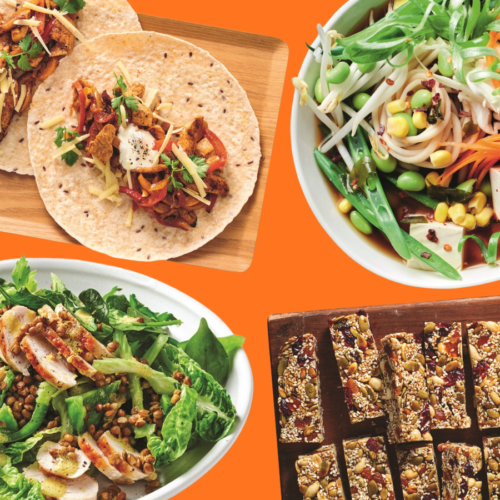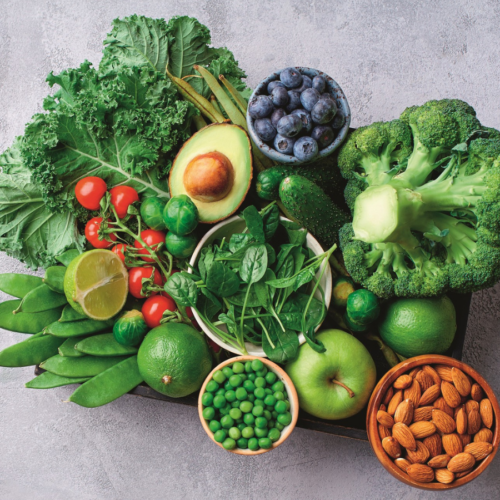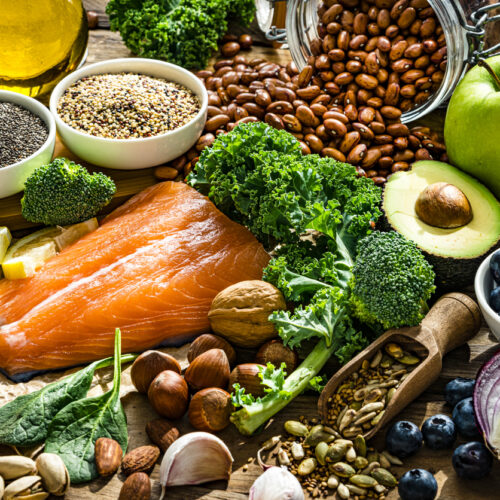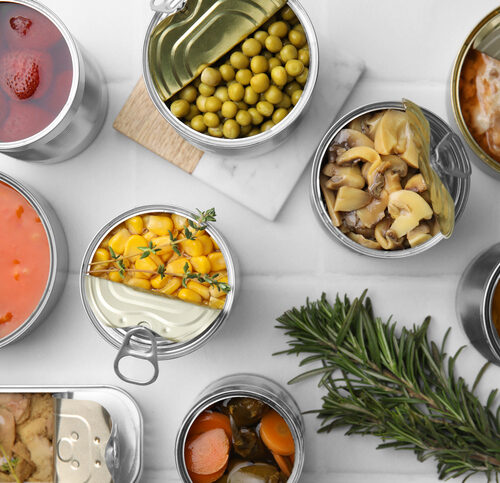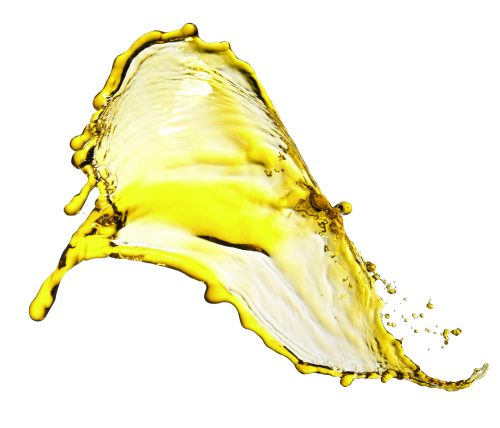
Which oils should you use for what cooking, and which ones are the best for your health? Senior Nutritionist Rose Carr explains.
Are you confused by the abundance of oils on supermarket shelves? We use oils for dressing salads, frying, cooking, baking, stir-fries and marinades, but most of us don’t want to stock our pantry with 10 different oils.
We all need fat in our diet: it’s essential for good health, growth and development. Fat supplies the essential fatty acids omega-6 and omega-3 and helps us to absorb the fat-soluble vitamins (A, D, E and K), as well as fat-soluble antioxidants, such as beta carotene and lycopene. Fat also provides energy with 37kJ per gram (that’s about 500-550kJ per tablespoon of oil) and adds both flavour and satiety.
Anywhere from 20-35 per cent of energy (kJ) from fat in our diet is recommended as healthy: in New Zealand the average is at the upper end at 34 per cent. So, the amount of fat we’re consuming is fine, but we do need to think about the types of fats we’re consuming.
Saturated fats
These fats tend to be solid at room temperature and are mostly found in animal products such as butter, cream, lard and the fat on meat. There are also two plant oils that are principally saturated fat, namely coconut oil and palm oil. We want to limit our intake of saturated fats as they can raise LDL cholesterol (the bad cholesterol) which increases our risk of developing heart disease.
Monounsaturated fats
These fats are predominately found in plant-based foods, such as avocados and most nuts, and are in oils such as olive, canola and peanut. Monounsaturated fats are heart-healthy because they help reduce LDL cholesterol.
Polyunsaturated fats
These fats also come from plant sources such as sunflower, safflower, soy bean, corn and sesame oils. There are two sub groups of polyunsaturated fats, known as essential fatty acids and they are exactly that: essential. The body can’t produce them so we must get them from our diets. These are the omega-3 and omega-6 fats.
Omega-3 is found in plant oils as ALA. The important omega-3 fatty acids associated with reduced risk of heart disease (EPA and DHA) can be made from ALA, but the conversion rate is low. The best source for EPA and DHA is from oily fish. However, for vegetarians and other non-fish eaters, the ALA conversion from plant oils may be higher than for others.
Omega-6 is one of the more common polyunsaturated fats found in our oils. Omega-6 polyunsaturated fats help to lower LDL cholesterol.
Note that no oil is made up of completely one type of fat. The amount of each type of fat in an oil varies.
Cold-pressed and refined oils
When oils are extracted from the vegetable, nut or seed by pressing without any heat, the oil is known as cold-pressed. These oils have better nutritive properties than refined oils but the disadvantage is low productivity, meaning it’s a costly process.
For refined oil, the crude oil is extracted, either using a solvent or expellers, and then impurities are removed. These oils are neutralised, bleached and deodorised in a multi-stage process. Refining produces oils that can be of high quality with a bland taste, clear colour, free from contaminants and are stable for frying. Refining may remove some of the antioxidant carotenoids. Compared to their equivalent cold-pressed oil, refined oils tend to be more stable (they don’t oxidise as quickly), have less flavour and a higher smoke point. They’re also usually a lot cheaper.
Smoke point
This is the temperature at which oil starts to break down and smoke, which affects the nutrition and flavour of the oil. Oils with higher smoke points are more versatile in the kitchen.
Oils prefer cool, dark places
All oils will deteriorate over time with exposure to light, heat and air, so store them in a cool, dark place.
Where possible, choose oil in a dark glass bottle or tin.
Cooking oils
Cooking oils have different nutritional qualities and different uses.
Peanut oil
This contains predominantly healthy monounsaturated fat and polyunsaturated fat, with around 20 per cent saturated fat. With a high smoke point this oil is great for stir-fries and its distinctive taste is often associated with Asian cuisine. A word of caution: be mindful of those with a peanut allergy.
- Best for stir-frying.
Avocado oil
High in monounsaturated fat with some polyunsaturated fat (omega-6) and low in saturated fat. A high smoke point makes this a versatile oil for cooking and frying; it’s also a flavoursome oil great for salads.
- Best for frying and dressing.
Sesame oil
Higher in polyunsaturated fat (omega-6) than monounsaturated, with lower saturated fat. Again, a high smoke point and distinctive flavour make it a good choice for stir-fries and Asian cuisine.
- Best for stir-frying and dressing.
Olive oil
High in heart-healthy monounsaturated fat and low in polyunsaturated fat and saturated fat. As a general rule, extra-virgin olive oil (the first pressing of olives) has more flavour and antioxidants. NZ extra-virgin olive oil has a higher smoke point than imported olive oils, so it can be used for stir-frying. Delicious on salads.
- Best for dressing and finishing.
Rice bran oil
High in beneficial monounsaturated fat and polyunsaturated fat (omega-6), this is a versatile oil with a mild flavour and a high smoke point, making it suitable for cooking, stir-frying, baking and salads.
- Best for all-round use.
Canola oil
Low in saturated fat, high in beneficial monounsaturated fat and contains omega-3 (ALA). Canola oil is a versatile, good all-rounder. It also has a high smoke point making it suitable for stir-frying and sautéing. It doesn’t have a strong aftertaste so it’s also suitable for baking and bringing out the flavours of cooking. A good choice for everyday use.
- Best for all-round use.
Flaxseed oil
Very high in omega-3 (ALA) polyunsaturated fat, with some monounsaturated fat and low in saturated fat. This oil has a very low smoke point, so it should not be heated. Suitable for drizzling on salads or vegetables, or try adding to smoothies.
- Best for dressing and finishing.
Soy oil
High in polyunsaturated fat (omega-6 and omega-3), some monounsaturated fat and low in saturated fat. It has a high smoke point, so it’s also a versatile oil for cooking, frying and salads.
- Best for all-round use.
Sunflower and safflower oils
Both high in polyunsaturated fat (omega-6) and low in saturated fat. Versatile oils with a high smoke point and mild flavour.
- Best for stir-frying.
Boutique oils
Walnut oil
High in polyunsaturated fat, both omega-6 and omega-3. Not suitable for cooking but great for drizzling on salads and vegetables.
- Best for dressing
Hazelnut oil
High in monounsaturated fat with some polyunsaturated fat (omega-6). High smoke point, so good for cooking and salads.
- Best for stir-frying and dressing.
Macadamia nut oil
Exceptionally high in monounsaturated fat (around 80 per cent) with some saturated fat (around 17 per cent) and little polyunsaturated fat. Can be used in cooking and salads.
- Best for baking and dressing.
Article sources and references
- Food and Agriculture Organization of the United Nations. 1993. Fats and oils in human nutrition. Report of a joint Expert Consultation. Chapter 5. Processing and refining edible oils. www.fao.org/ docrep/v4700e/v4700e0a.htmhttp://www.fao.org/home/en/
- Food and Agriculture Organization of the United Nations. 2010. Fats and fatty acids in human nutrition. Report of an Expert Consultation. www.fao.org/docrep/013/i1953e/ i1953e00.pdfhttp://www.fao.org/home/en/
- Foster R et al.2009. Briefing Paper: Culinary oils and their health effects. British Nutrition Foundation: Londonhttps://www.nutrition.org.uk/attachments/113_Culinary%20oils%20and%20their%20health%20effects.pdf
- Heart Foundation New Zealand www. heartfoundation.org.nz/healthy-living/healthyeating/ food-for-a-healthy-heart/replace-butter/ which-oil-to-use Accessed March 2015https://www.heartfoundation.org.nz/wellbeing/healthy-eating/nutrition-facts/is-butter-good-for-you/
- Ministry of Health. 2006. Nutrient reference values for Australia and New Zealand: Including Recommended Dietary Intakes. Canberra: Commonwealth of Australiahttp://www.moh.govt.nz/NoteBook/nbbooks.nsf/0/FD14C5E898B74265CC2574BE007DACF6/$file/n35.pdf
- Seddon M. 1999. Dietary fats. www. heartfoundation.org.nz/uploads/Dietary%20 Fats_March1999.PDFhttps://www.heartfoundation.org.nz/shop/heart-healthcare/eating-for-a-healthy-heart-v2.pdf
- Siger A et al. 2008. The content and antioxidant activity of phenolic compounds in cold-pressed plant oils. Journal of Food Lipids 15:137-49https://onlinelibrary.wiley.com/doi/full/10.1111/j.1745-4522.2007.00107.x
- Torres M et al. 2005. A multivariate study of the relationship between fatty acids and volatile flavour components in olive and walnut oils. Journal of the American Oil Chemists’ Society 82:105-10https://link.springer.com/article/10.1007/s11746-005-1050-0
- Welch AA et al. 2010. Dietary intake and status of n-3 polyunsaturated fatty acids in a population of fish-eating and non-fish-eating meat-eaters, vegetarians, and vegans and the precursor-product ratio of linolenic acid to long-chain n-3 polyunsaturated fatty acids: results from the EPIC-Norfolk cohort. American Journal of Clinical Nutrition 92:1040-51https://www.ncbi.nlm.nih.gov/pubmed/20861171
www.healthyfood.com


